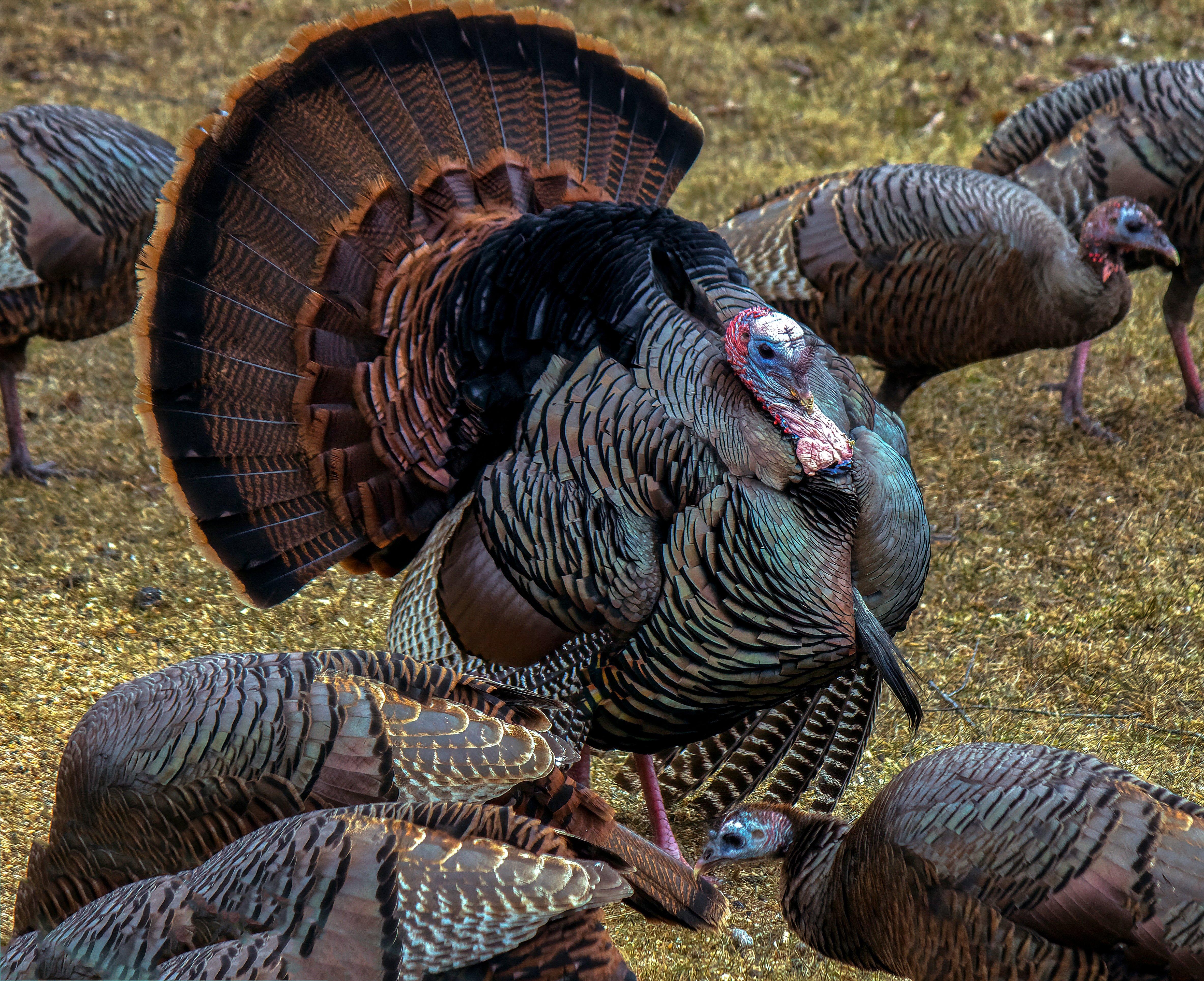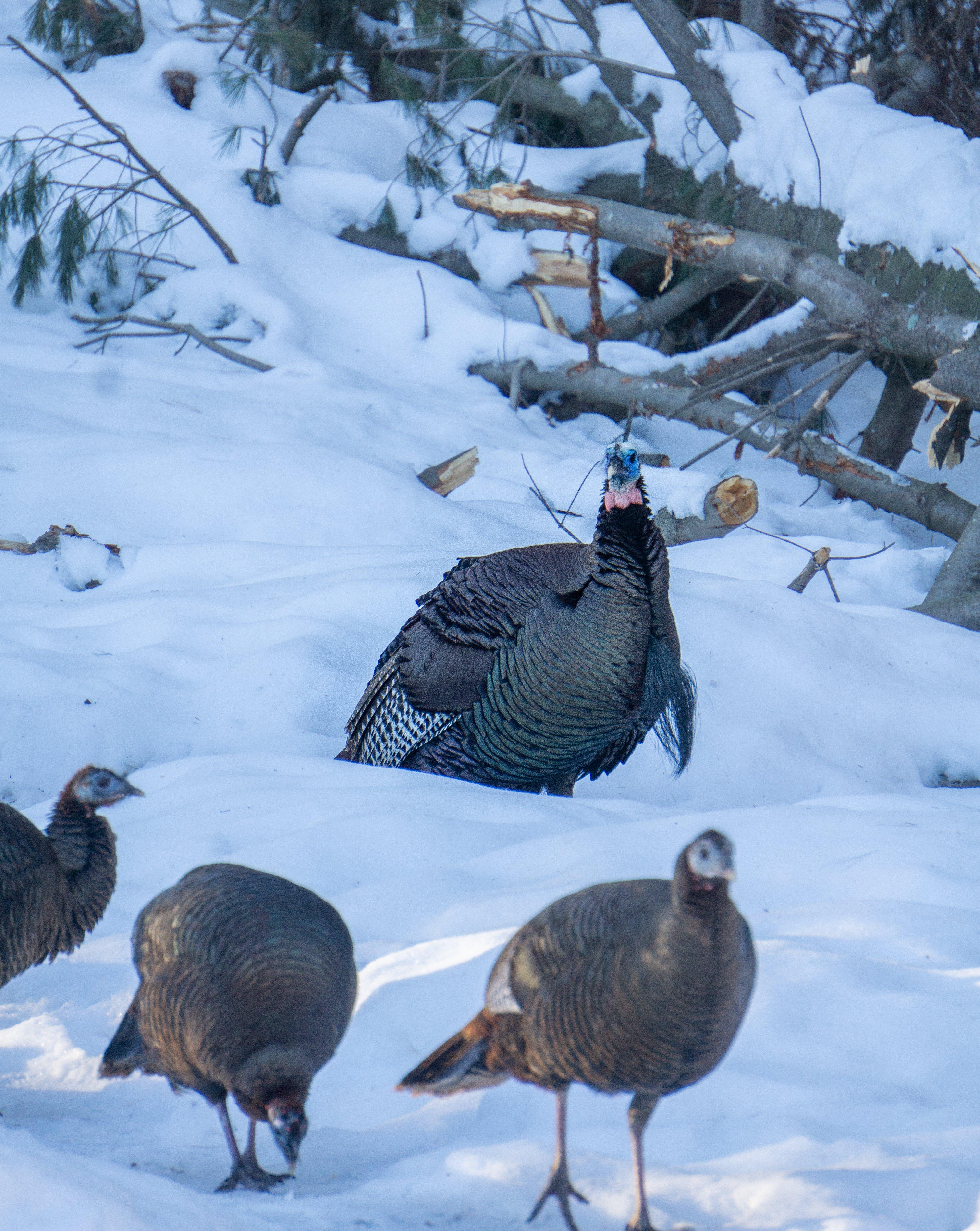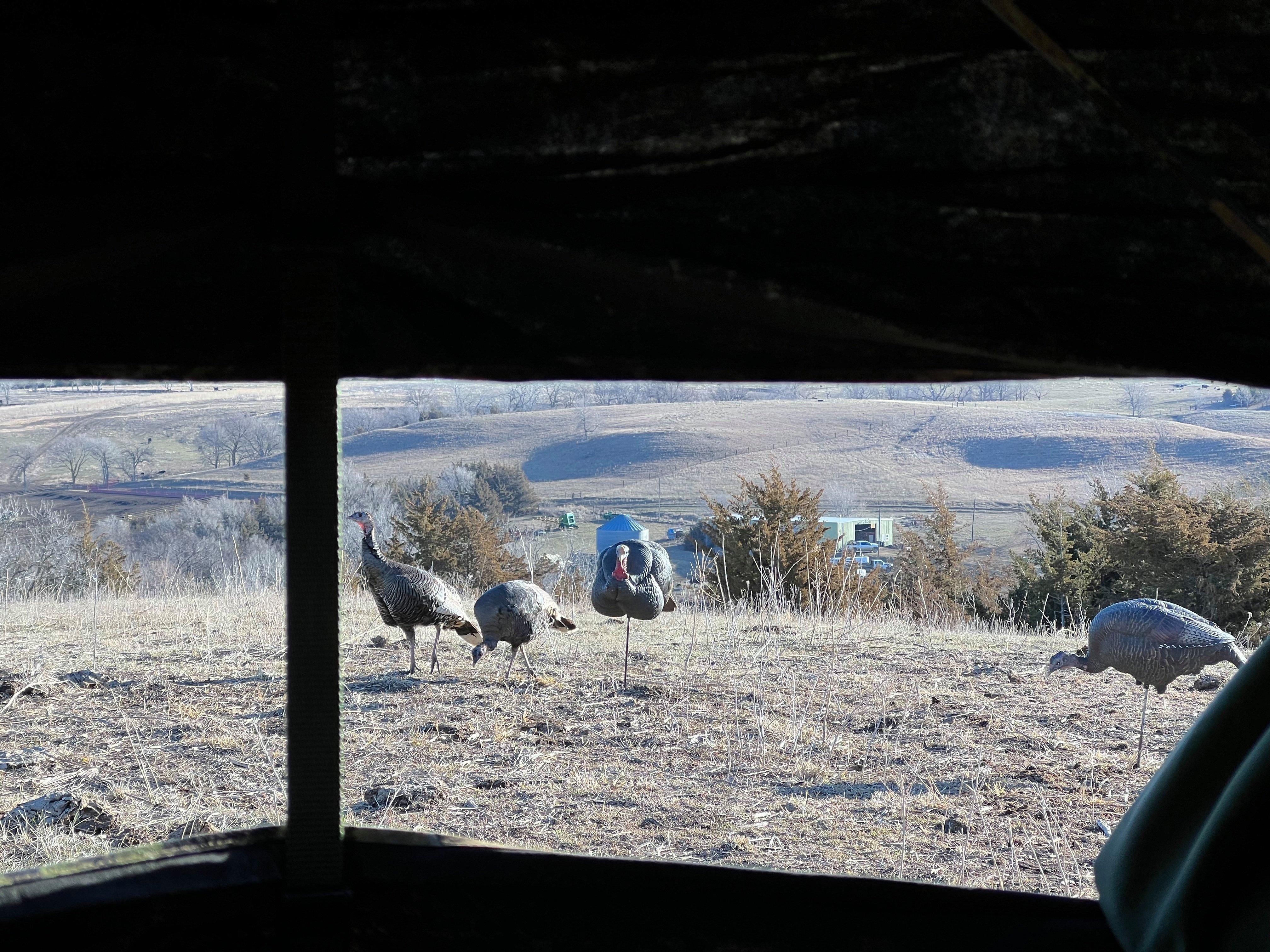Archery hunters in the Plains are finding large flocks of roaming toms and hens

I haven't observed any breeding just yet, but I'll bet it's happening — I've observed it as early as March 20 in previous years. Turkeys in my neck of the woods, of which I'm seeing no shortage despite a brutal winter, have been strutting at least a month now, sometimes even during cold, snowing conditions. They're ready to rumble. They're looking a little slimmer than usual, but healthy nonetheless.
Fortunately, the 10-day forecast here shows temps rising to the high 60s and even low 70s following Easter. Music to my ears. I have my eye on a large group of six toms and four jakes, so I expect a great youth hunt for my nephew, whom I'll be mentoring April 15 and 16.
Meanwhile, my wife and I had a few days to spare after recently visiting family in South Dakota, so we hit Nebraska for a few days while the weather cooperated. On some ground I hadn't previously hunted for turkeys, three jakes came in gobbling to the calls and decoys on the first morning. I shot a photo rather than an arrow. I assumed the immediate action meant a tom would be manageable.
Boy, was I wrong! Over two and half days, flocks traveled mind-boggling distances — even through patchy snow — and said zilch after flying down. Calling proved futile. I've never observed such unpredictable bird movement during late March, and I never drew my bow. I did call in two curious hens four different times within a matter of an hour, but they were alone each time.
(Don't Miss: 5 Favorite Lures for Bass Fishing)
Nonetheless, the immense amount of turkey sign assured me that Cornhusker State turkeys fared quite well despite an adverse plains winter. The same appeared to be true of birds we observed while in South Dakota. By the way, I'll be pointing toward South Dakota again later this month and will know more then.
Friend and fellow outdoor scribe Dale Evans just completed a California hunt. When asked to summarize the action or lack thereof, he said, Henned-up is the word. Toms were gobbling but wouldn't leave the hens. Things are way behind usual out there due to unprecedented cold and rain over the past month or so.
Still, Evans got his Rio. He was gobbling about 100 yards away, he told. He gobbled at every call, but wouldn't budge. So, I circled and got within 60 yards. I did some scratching in the brush, which pulled the hens right to me with the gobbler in tow.
It's no doubt that birds on either side of the Rocky Mountain range experienced a punishing winter, as did all other species. I'm reading alarming reports on the deer, elk, and antelope winter kill. Western turkeys that flocked to ranches probably did OK, but there's no doubt that winter claimed its share of birds in some areas, especially those still laden with crusted, deep snow, making natural food virtually inaccessible. The USDA's Forest Service Snow Depth Map paints an alarming picture for wildlife in many western locations.
On a positive note, Levi Johnson of Doggin' With Levi said good things about birds around his Big Sky State haunts. Turkeys are in good shape here in Central Montana, Johnson said. It was an average winter, and numbers look great heading into spring! We've had lots of grasshoppers the last couple of years, so turkeys have done really well.
Most Eastern seasons open later this month or on May 1, but Carter Heath, the NWTF's New England regional director, shared his two cents.
Winter flocks in the Northeast seemed to start dispersing around mid-March, Heath commented, but a significant snowstorm in the third week seemed to flock them back up. Now in the first week of April, I'm noticing significant gobbling and strutting. Despite the lack of good mast going into the winter, the turkeys fared well. Two-year-old gobblers are abundant on the landscape.
For those of you with Midwest seasons opening in the next couple of weeks, the key will be patterning birds or enticing them with an aggressive jake decoy next to a hen. I expect calling will work well. As for the plains states, patterning could prove difficult for the next week (varying by location), so be prepared to hunt hard and cover lots of ground. And don't forget to check back for next week's Strut Report.















